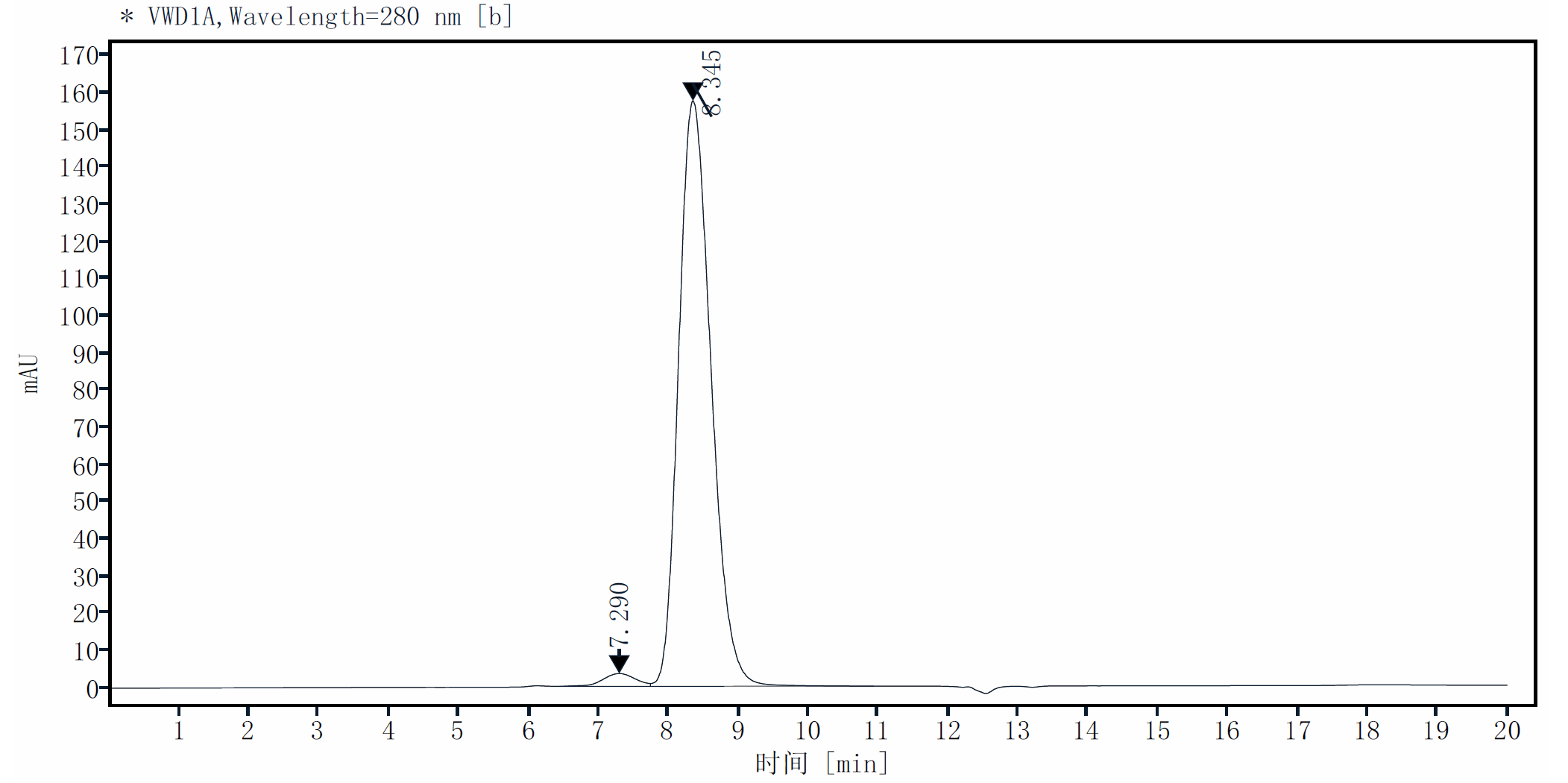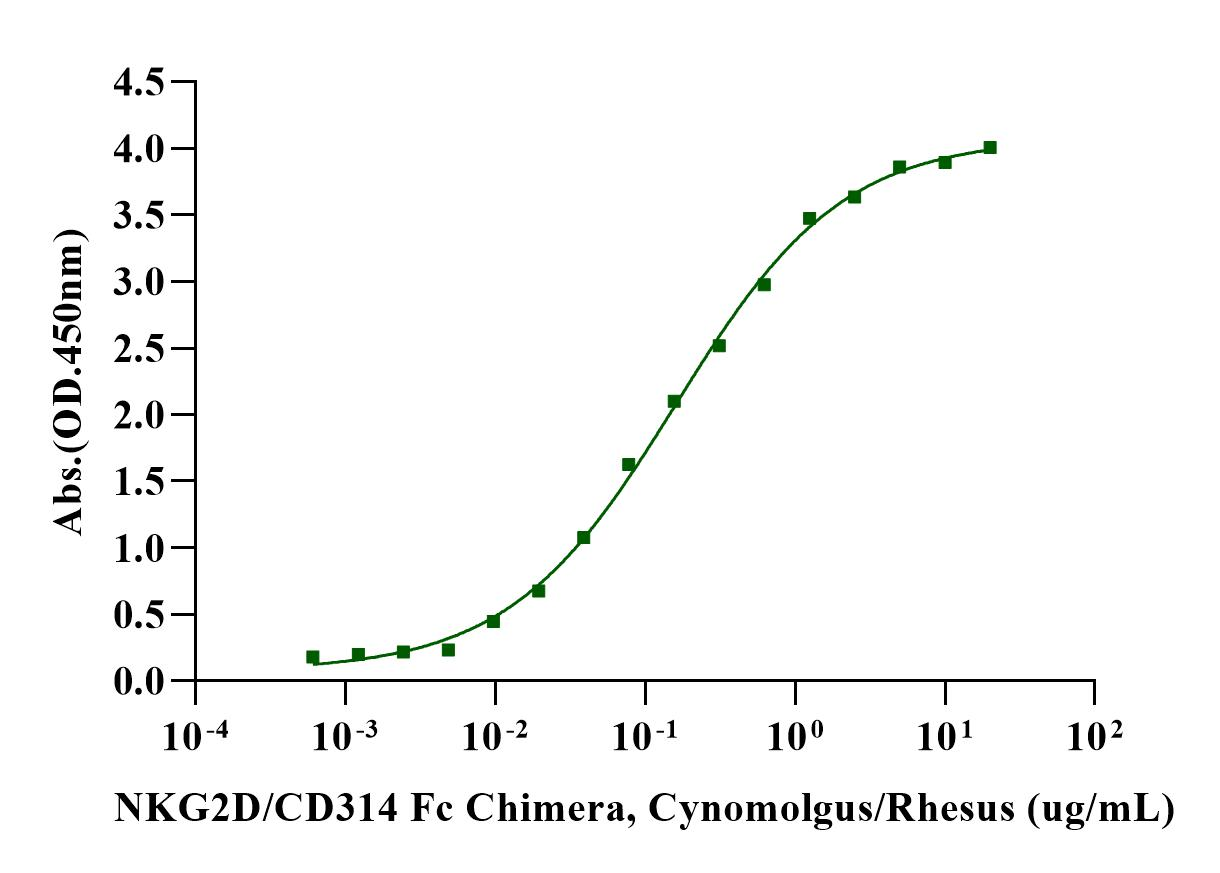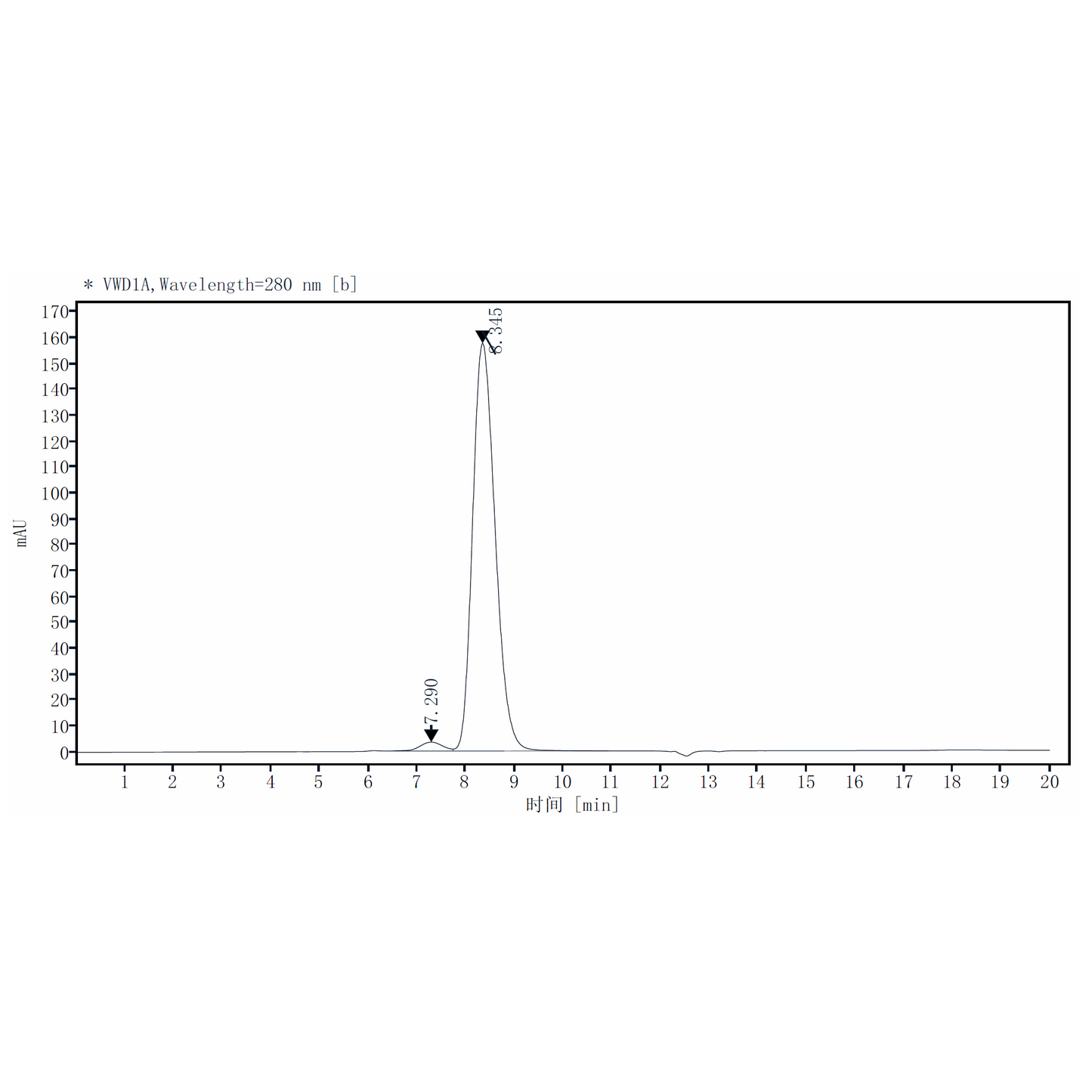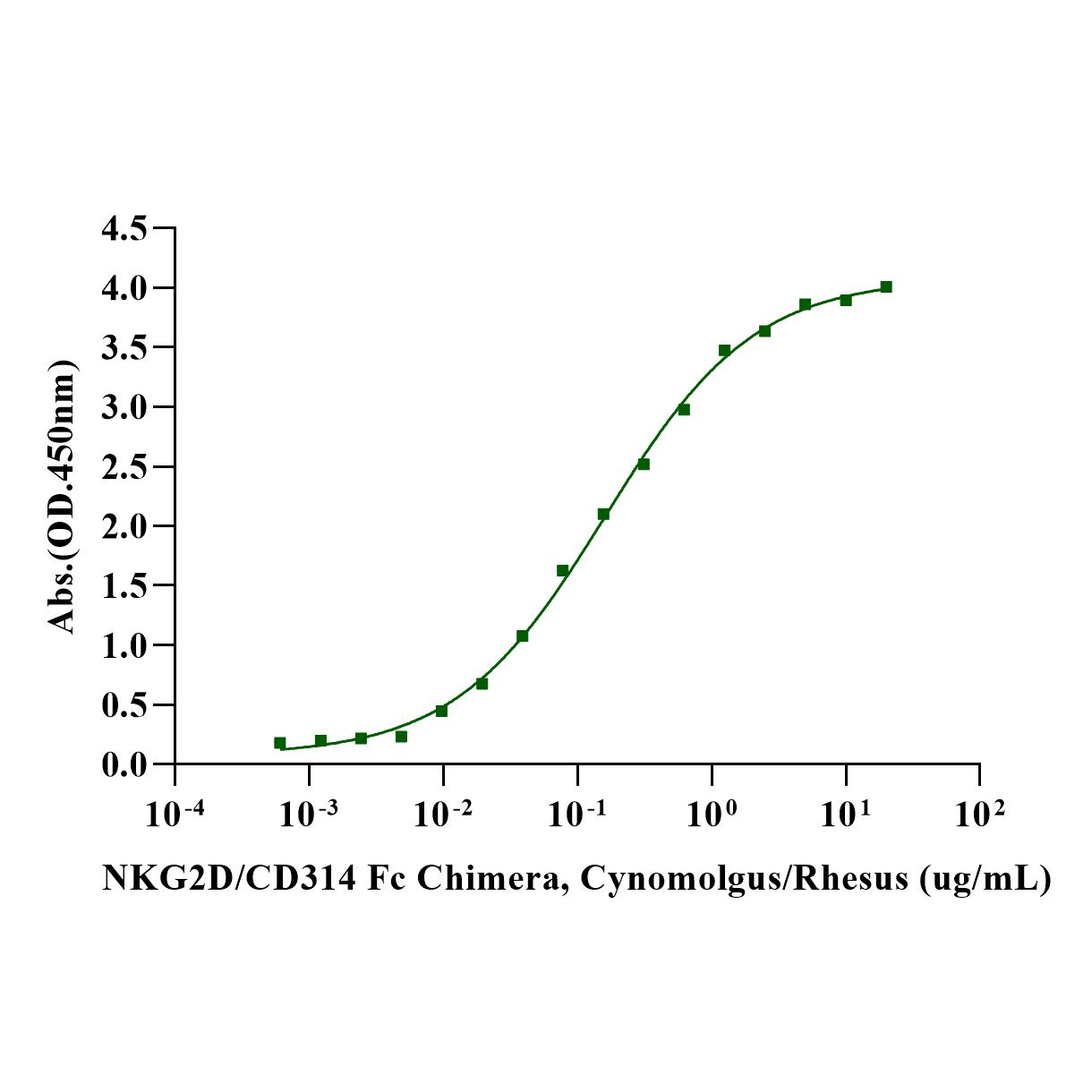2μg (R: reducing condition, N: non-reducing condition).
Product Details
Product Details
Product Specification
| Species | Cynomolgus |
| Synonyms | NKG2D,CD314,KLRK1,NK cell receptor D |
| Accession | P61252 |
| Amino Acid Sequence | Phe78-Val216, with N-MD and hIgG1 Fc |
| Expression System | HEK293 |
| Molecular Weight | 55-70kDa (Reducing) |
| Purity | >95% by SDS-PAGE |
| Endotoxin | <0.1EU/μg |
| Conjugation | Unconjugated |
| Tag | Human Fc Tag |
| Physical Appearance | Lyophilized Powder |
| Storage Buffer | PBS, pH7.4. |
| Reconstitution | Reconstitute at 0.1-1 mg/ml according to the size in ultrapure water after rapid centrifugation. |
| Stability & Storage | · 12 months from date of receipt, lyophilized powder stored at -20 to -80℃. · 3 months, -20 to -80℃ under sterile conditions after reconstitution. · 1 week, 2 to 8℃ under sterile conditions after reconstitution. · Please avoid repeated freeze-thaw cycles. |
| Reference | 1.Cerwenka, A. et al. (2001) Proc. Natl. Acad. Sci. USA 98:11521. 2.Diefenbach, A. et al. (2001) Nature 413:165. 3.NKG2D and its Ligands (2002) www.rndsystems.com. |
Background
NKG2D is a type II transmembrane glycoprotein having an extracellular lectin-like domain. This domain lacks the recognizable calcium-binding sites found in true C-type lectins and binds protein rather than carbohydrate ligands. Human ligands for NKG2D include MICA, MICB, and ULBP1,2, and 3. Expression of NKG2D ligands occurs in epithelial cells, tumor cells and under conditions of stress or infection. NKG2D exists as a disulfide-linked homodimer that delivers an activating signal upon ligand binding. NKG2D has been implicated in anti-tumor surveillance and the immune response against viral infection. In NK cells, NKG2D serves as an activating receptor, which itself is able to trigger cytotoxicity.
Picture
Picture
SDS-PAGE
SEC-HPLC

ELISA

Immobilized MICB His Tag, Human (Cat. No. UA010590) at 2.0μg/mL (100μL/well) can bind NKG2D/CD314 Fc Chimera, Cynomolgus/Rhesus (Cat. No. UA010739) with EC50 of 0.14-0.18 μg/mL.




